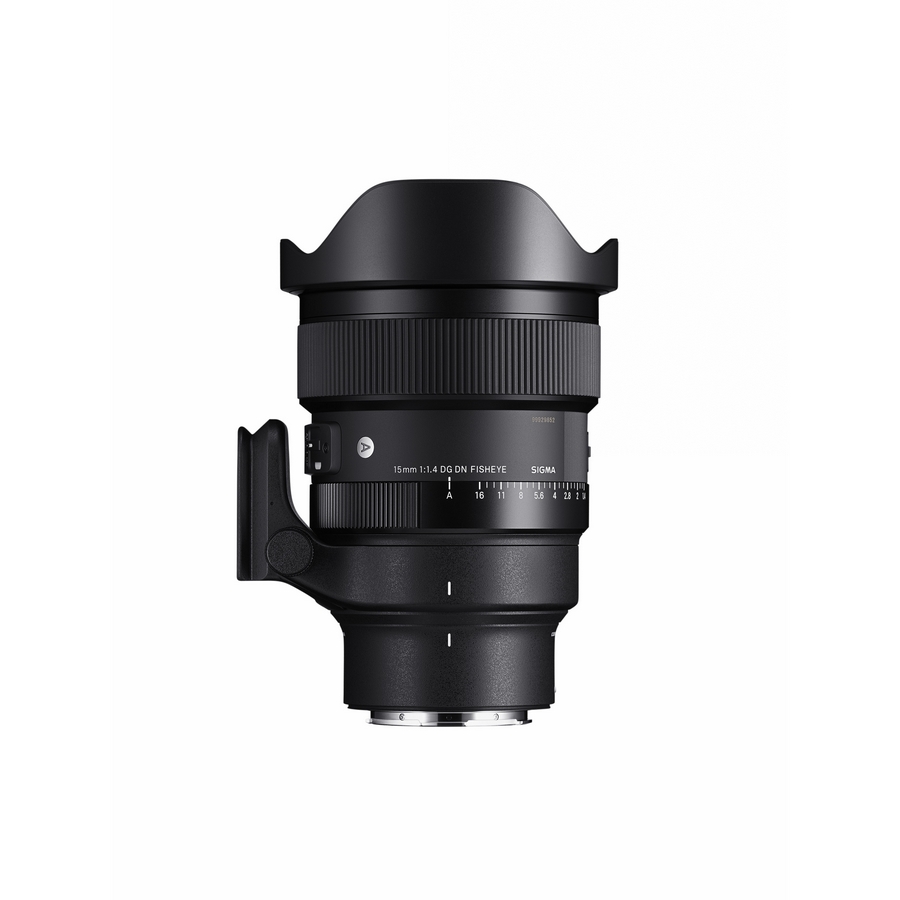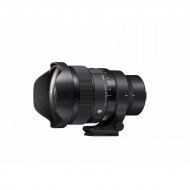Sigma 15mm f1.4 DG DN Diagonal Fisheye
Capture expansive landscape, star-filled skies, creative portraits and architecture with the SIGMA 15mm F1.4 DG DN DIAGONAL FISHEYE | Art. With its bright F1.4 aperture and 180° angle-of-view, get an all-new perspective and let your creativity flow with unique images with exaggerated proportions. The lens features a host of useful features for astrophotographers. Its built-in rear filter holder allows for gel-type ND filters to be inserted, a lens heater retainer that prevents heat strips from slipping over the front of the lens, and a unique manual focus lock switch that disables the focus ring.
Images are sharp across the whole frame thanks to the sophisticated glass elements that effectively reduce sagittal coma flare and other optical aberrations. With its set of professional features including a special locking lens cap with filter holder, tripod socket, weather-resistant construction, customisable AFL buttons*, HLA motor and aperture ring, the SIGMA 15mm F1.4 DG DN Diagonal Fisheye for L-mount and Sony E-mount one of the most unique lenses in the SIGMA line-up.
Professional build quality
The exceptional build quality of the 14mm F1.4 DG DN is exactly as you’d expect from an Art-line lens, both in the materials used, the overall ergonomics and the quality of craftsmanship.
The exterior barrel is made of a polycarbonate called Thermally Stable Composite (TSC). Not only is this very strong and light, but it has a similar thermal expansion rate to aluminium. This ensures that the interior aluminium parts and the exterior TSC parts behave in a uniform way as temperatures change.
The focus ring is rubberised for easier operation, and focusing is internal, meaning the lens never changes length. This makes it ideal for use on a gimbal as the centre of gravity remains fairly constant.
Towards the rear of the barrel is an aperture ring, which can be de-clicked for stepless aperture changes. When put into Auto, aperture is controlled by the camera. A lock switch allows users to lock the ring in Auto or Manual so it’s not accidentally knocked into a different setting
To reduce flare and ghosting in bright sun, and to help protect the front element from damage if dropped, the lens has a robust petal-type lens hood.
The durable brass mount is surrounded by a rubber seal to help keep out dust and moisture.
Professional feature-set
A range of controls on the lens include an AF/MF switch, a customisable AFL button and switches to de-click and lock the aperture ring.
The lens also has a Manual Focus Lock switch that allows users to completely deactivate the focus ring once focus has been acquired, ensuring that the focus position won’t change should the ring be accidentally knocked.
High-performance optics
The lens can precisely reproduce bright points of light across the whole frame, even when shooting wide open at F1.4. It is constructed using 21 glass elements in 15 groups. 4 FLD and 3 SLD low dispersion glass elements effectively reduce sagittal coma flare and other aberrations. This ensures that bright points of light remain pinsharp at all apertures across the entire frame, ideal for astrophotography.
To prevent flare and ghosting the 15mm F1.4 was designed using state-of-the-art simulation technology. This resulted in a lens that is highly resistant to flare and ghosting, producing clear and sharp images in challenging lighting conditions.
Rear filter holder
As the 15mm F1.4 uses a rounded glass element as the front optic, a rear filter holder has been included. Rear filters (available from several filter manufacturers) are about the size of an SD card, so very small and light, and as they’re positioned between the camera and lens, don’t tend to get damaged or dirty. It’s easy to cut filters by hand from gel sheets, and a special template is included with the lens.
 Facebook
Facebook





